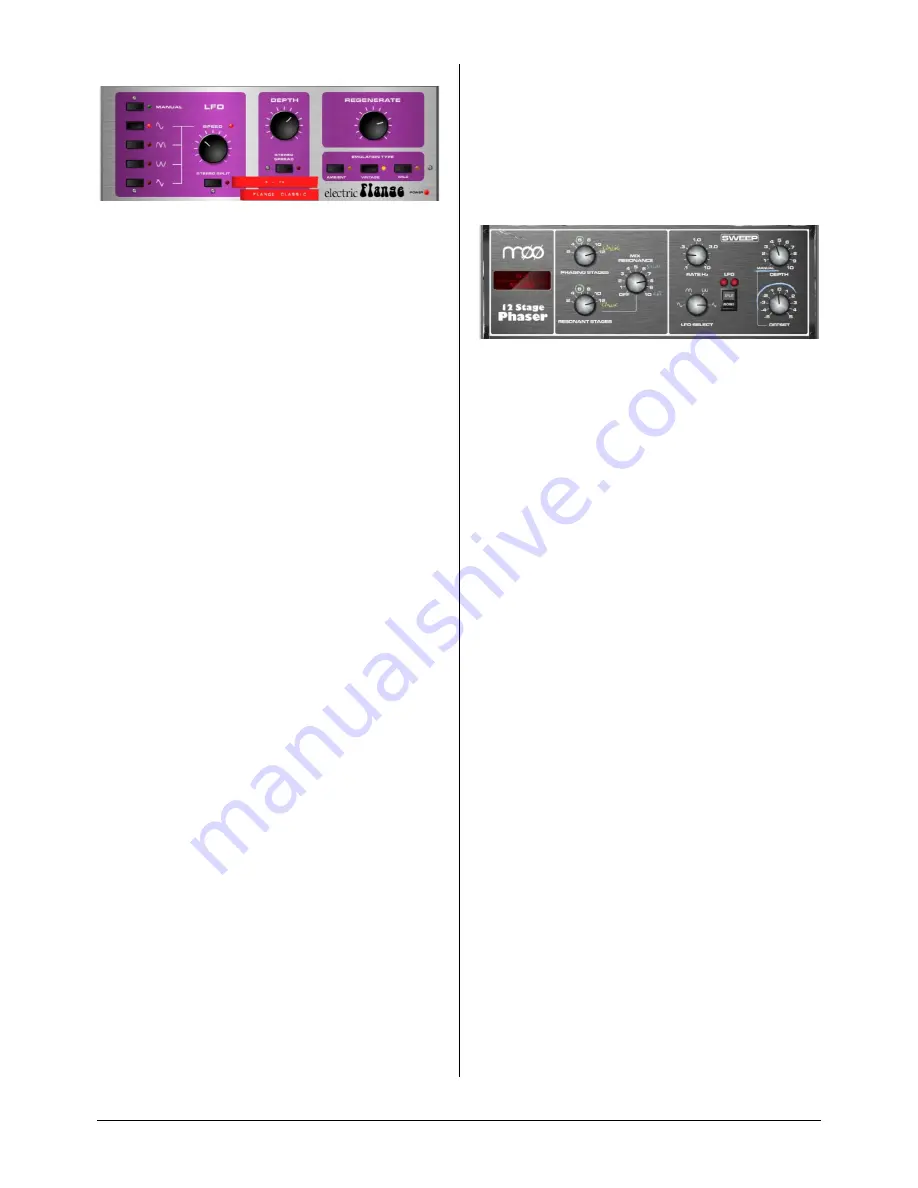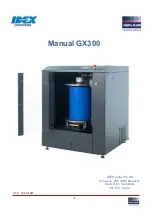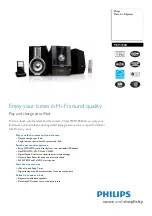
GLD
Touch Screen Reference V1.2 – Issue 1 24
ALLEN
&
HEATH
Flanger
Three classic flanger effect emulations – ‘Ambient’, ‘Vintage’
and ‘Wild’. During research of classic pedal flangers we
found numerous LFO modulators and stereo splitting
techniques. We implemented them all.
For classic deep flange set Stereo Split and Stereo Spread
off, pick triangular modulation, Vintage type and adjust
Depth and Regeneration. The Manual switch overrides the
LFO, for manual flange sweeps, only found on few historic
flangers.
The module is stereo in, stereo out (with software
normalised mono input if the source is mono).
Stereo Split
Uses two separate LFO’s for left and right,
creating an enhanced stereo image with left and right
flanging in different directions. Can sound very
‘psychedelic’. Enhanced Stereo Split can reduce the
intensity of the flange zone.
Stereo Spread
Creates an enhanced stereo image by
offsetting left and right flange voices with dynamic delay.
Can sound super wide stereo or phasey depending on
programme. Enhanced Stereo Spread can reduce the
intensity of the flange zone. With both Stereo Split and
Spread off the stereo image is preserved. For classic deep
traditional flange effect turn both Stereo Split and Spread
off.
LFO Type selector:
Manual Speed
control becomes a manual sweep control
(LED goes green). Sine, Rectified sine, Inverted rectified
sine, Triangular Shape of auto oscillation. Speed Ranges
from off to fast modulation. The LED goes red when in auto
mode, green when in Manual mode.
Depth
- Adjusts the flange zone depth. Min position
operates in a tight flange zone. At max position the effect
sweeps in and out of the flange zone creating a greater
tonal change. High settings of Depth can sound extreme.
Regenerate
- Produces feedback into the flanging delay
line, making the flange more pronounced. Min position can
result in no audible flange. Max position can sound too
aggressive.
Emulation Types:
Ambient
- HF rich, subtle flange, creating ambience. Great
with overhead mics for a spatial sound.
Vintage
- Creates a classic silky sound reminiscent of tape
machine flanging. Regen control is well balanced LF and
HF and the flanging does not get too aggressive.
Wild
- An untameable, dramatic effect. The sound turns
inside out.
Preset Name
is displayed. Touch and scroll using the
screen Rotary for live update. This is a way of live
auditioning all library presets for this module (factory, user
and USB). You can also select and recall a particular preset
using the Library window.
MOO 12 Stage Phaser
A classic 12 stage emulation producing rich textured
phasing with plenty of control. The user has control of
number of stages, feed forward and feed back, and ‘zero’
depth manual mode – to manually sweep the Phaser using
the offset control.
The classic characteristic sound is produced by careful
emulation of the phase chain and operating frequency
range around the offset control. Equally important is the
emulation of harmonic signatures produced by the
companded analogue delay lines producing rich harmonics
adding thickness to the sound. The split/mono LFO switch
toggles between in-phase intense phasing and split-phase
mode - creating spatial rotary effects.
There are many different possibilities through varying the
number of stages in the phase chain output or the feedback
resonance path. Setup depends on the instrument applied
to the unit. Lower numbers produce clean thin sounds. A
higher numbers of stages produce a richer phasing sound.
Phasing Stages
- Selects which point in the phase chain is
taken as output. 6 stages produce a clean phase. However
the classic rich sound is 12 stages.
Resonant Stages
- Select which point of the phase chain is
taken into the feedback ‘mix resonance’ circuit. 12 Stages is
classic.
Mix Resonance
- Controls the amount of feedback into the
phase chain input. Classic sound around 5 - 8. Full
resonance at 10.
LFO Rate
- Variable between 0.1 to 10Hz
LFO Select switch
- Sine / Rectified / Inverse Rectified /
Linear(Triangular) are selectable. Classic unit uses
Linear(Triangular). Slow Phasing sounds great with Sine.
Rectified variants can create notches or phase spikes which
can sound cool. Rectified variants are twice the speed.
LFO split switch
‘Mono’ setting configures the Left and
Right Phase Chains to modulate in phase, the strongest
effect. ‘Split Phase’ runs Left and Right not in Phase,
creating a stereo swirl for added spatial rotary effect.
Depth
- Controls the amount or depth of LFO modulation in
the phase chain. Extreme settings can sound unnatural.
Setting this control to minimum turns the LFO modulator off
















































